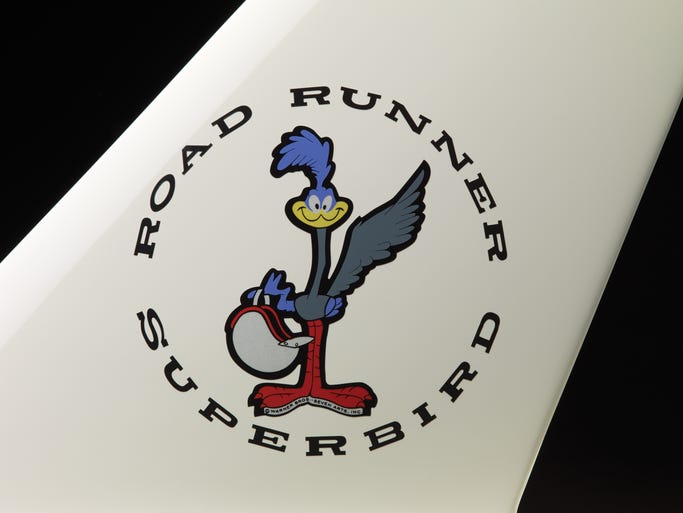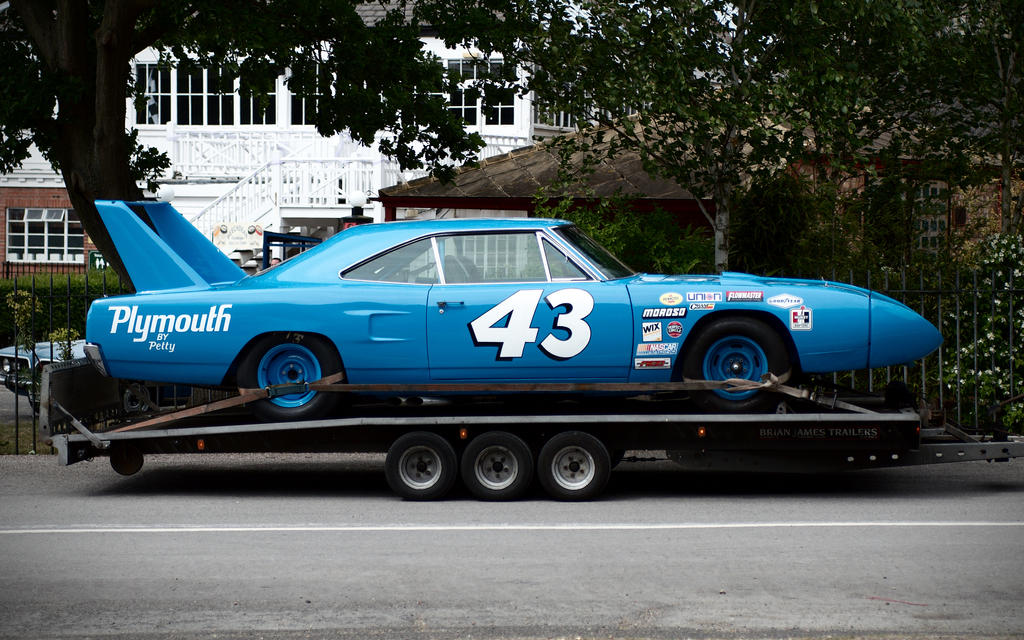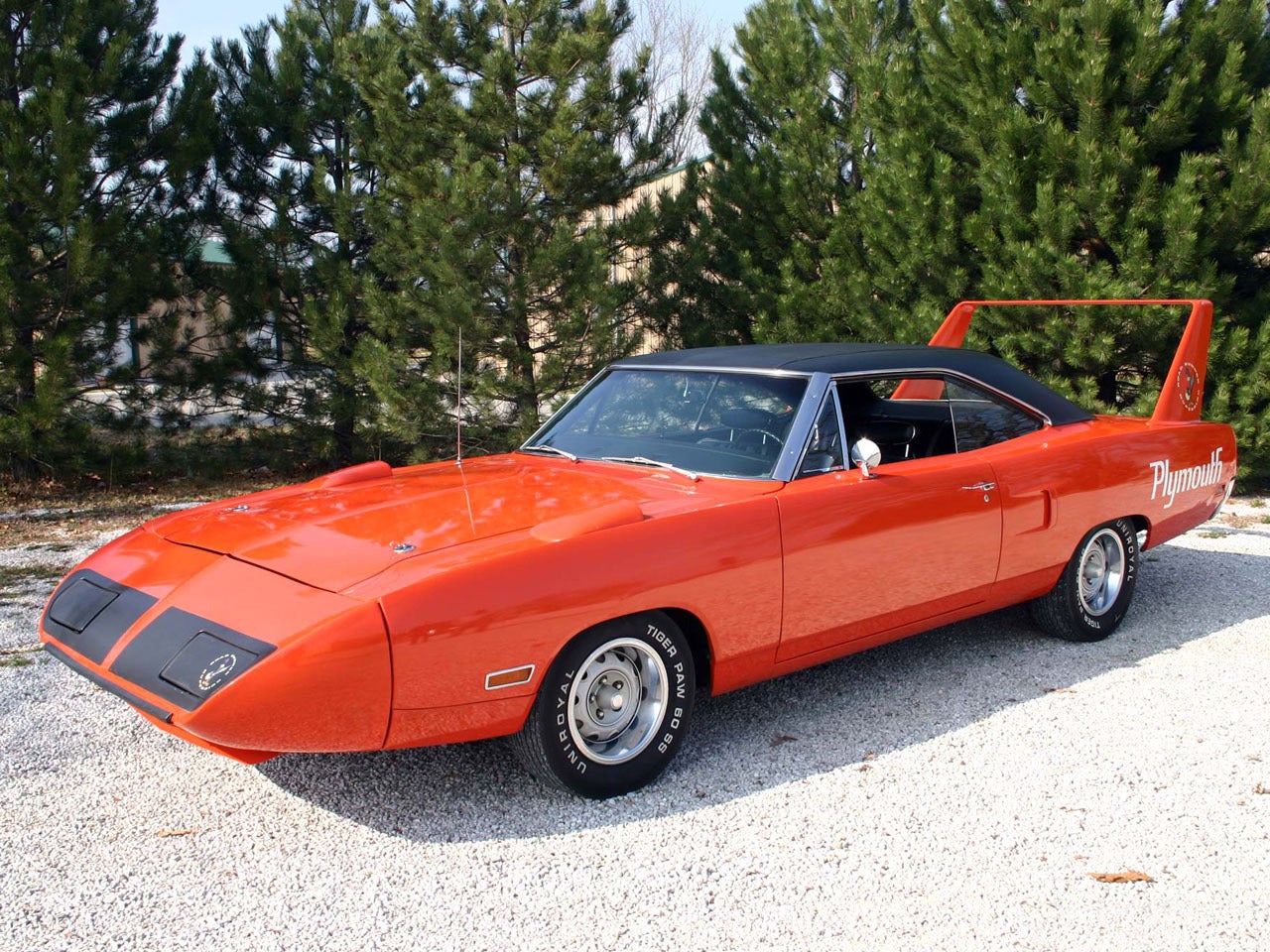
The Plymouth Superbird is one of those classic American cars from the muscle car era that has captured the imagination of all sorts of automotive enthusiasts long after its presence on roads and race tracks wore away. It's easy to see why. Where else but in the Swingin' Sixties and Seventies would a car leave the factory with an aerodynamics package that included a pointy beak and a rear spoiler that sat several feet above the rear deck?
The example you see above, which was born in 1970, is one of the finest Superbirds we've ever seen. Combine its complete restoration with its original 426 Hemi engine, and it's no surprise that it managed to bring in a cool half million dollars (plus 10 percent in fees) at Barrett-Jackson. See it yourself in our high-res image gallery above, and scroll down below for the official auction description.
If you want to follow along with the coverage, check out the Hagerty Fantasy Bid online game here.
Details
Authenticated and visually inspected by Mopar authority and expert, Galen Govier. Verified original matching numbers engine and transmission with original VIN Tag, Fender Tag and secondary body codes. Currently listed in Galen's Registry as #25 of 78 HEMI Superbirds registered and accounted for in the USA. Documented rotisserie restoration with photos included. 2013 First in Class winner at the 41st Annual Concours d'Elegance held in Forest Grove, OR. Features include the original 426/425hp HEMI engine with dual four carburetion, original 727 TorqueFlite automatic, original A36 performance axle package, power disc brakes, power steering, "Tic-Toc" tachometer, factory gauge package, AM radio, remote left mirror, black vinyl top, Rally wheels with Goodyear Polyglas tires, matching spare with both jacks and outstanding original body including nose cone. Beautifully refinished in the original Alpine White exterior color. Galen Govier's visual report is included along with Fender Tag decoding, Registry Certificate, original owner's manual and owner history plus an additional visual report by Mopar authority, Dave Wise at MMC Detroit. This is one of the finest and rarest HEMI Superbirds anywhere.




 While the race versions got full blown Hemi engines, most of the
Superbirds got 440 Super Commandos or 440 six-packs rated at 385hp. Of
the 1920 cars made, only 93 got the Hemi 426. These were conservatively
rated at 425 bhp at 4500 rpm, but actually peaked at 5800 rpm producing
550 bhp.
While the race versions got full blown Hemi engines, most of the
Superbirds got 440 Super Commandos or 440 six-packs rated at 385hp. Of
the 1920 cars made, only 93 got the Hemi 426. These were conservatively
rated at 425 bhp at 4500 rpm, but actually peaked at 5800 rpm producing
550 bhp.









 In
1972 Larry Shinoda stopped by my house; he was directly involved in the
GM association with Jim Hall, and I showed Larry the original Amick
report. Larry confirmed my partner had given the wind tunnel report to
Hall, and that Hall was skeptical. Per Larry, he himself had been
thinking of similar ideas, and when he read Amick's report realized they
had been proven in a wind tunnel. It was Shinoda that convinced Hall it
was worth a try.
In
1972 Larry Shinoda stopped by my house; he was directly involved in the
GM association with Jim Hall, and I showed Larry the original Amick
report. Larry confirmed my partner had given the wind tunnel report to
Hall, and that Hall was skeptical. Per Larry, he himself had been
thinking of similar ideas, and when he read Amick's report realized they
had been proven in a wind tunnel. It was Shinoda that convinced Hall it
was worth a try.


 Not
all testing took place in wind tunnels. Greg Kwiatkowski wrote, “My
car, DC-93, (also known as #88 later in life), was used at the
Huntsville Airport for coast down studies on the new ‘wing.’ They’d run
one way, turn around and run back, averaging the numbers out to get rid
of any spurious input [e.g. wind.]” In essence, if you take it up to
speed, then put it in neutral, and measure the time it takes to slow
down — or the speed after a certain distance — you can get a rough
measure of drag under real life conditions, including the road going by
underneath.
Not
all testing took place in wind tunnels. Greg Kwiatkowski wrote, “My
car, DC-93, (also known as #88 later in life), was used at the
Huntsville Airport for coast down studies on the new ‘wing.’ They’d run
one way, turn around and run back, averaging the numbers out to get rid
of any spurious input [e.g. wind.]” In essence, if you take it up to
speed, then put it in neutral, and measure the time it takes to slow
down — or the speed after a certain distance — you can get a rough
measure of drag under real life conditions, including the road going by
underneath. 



























